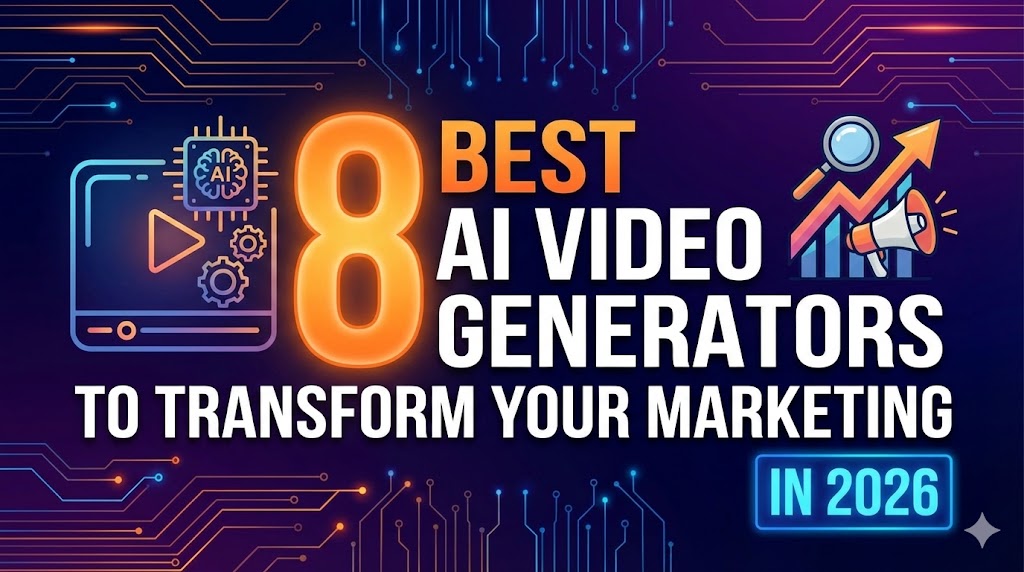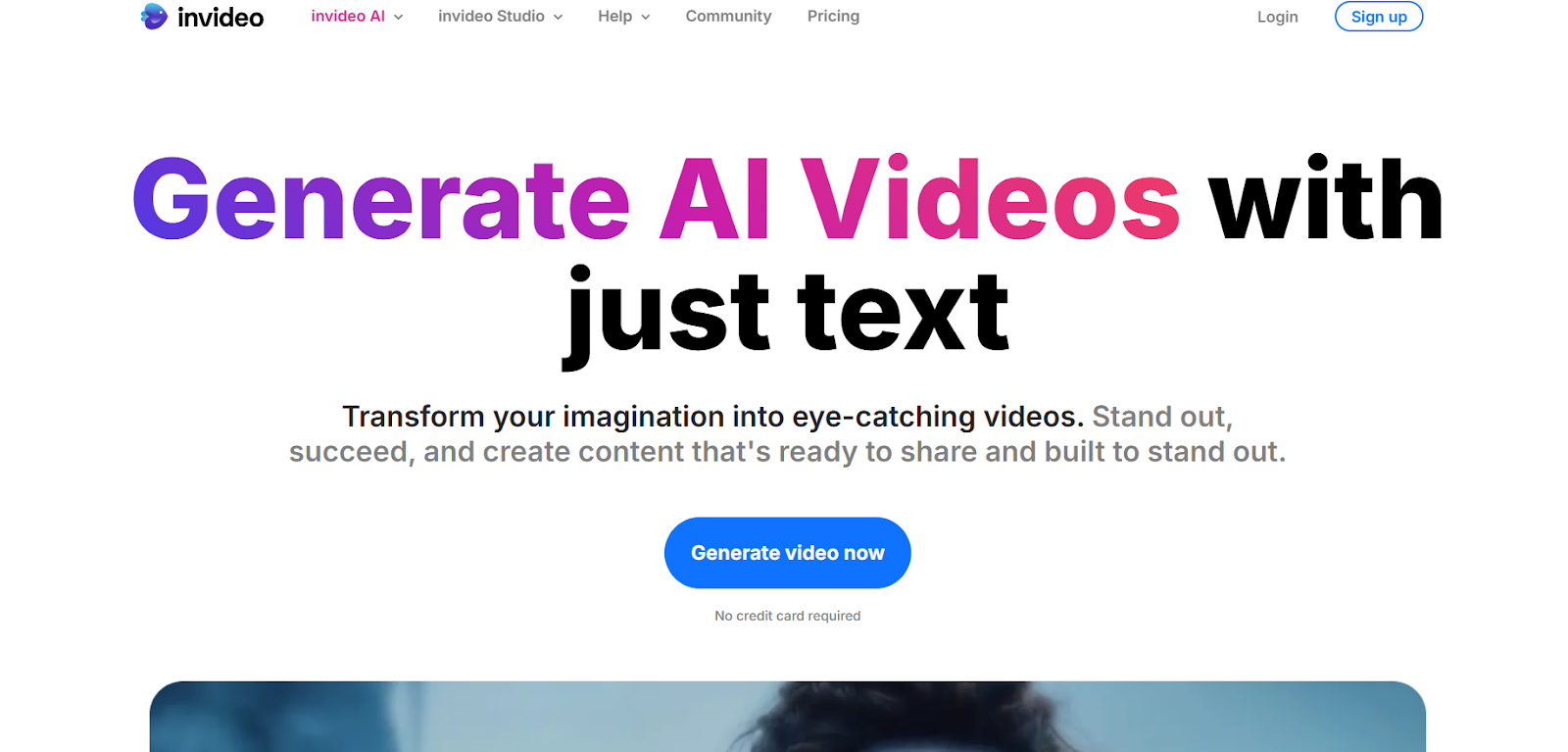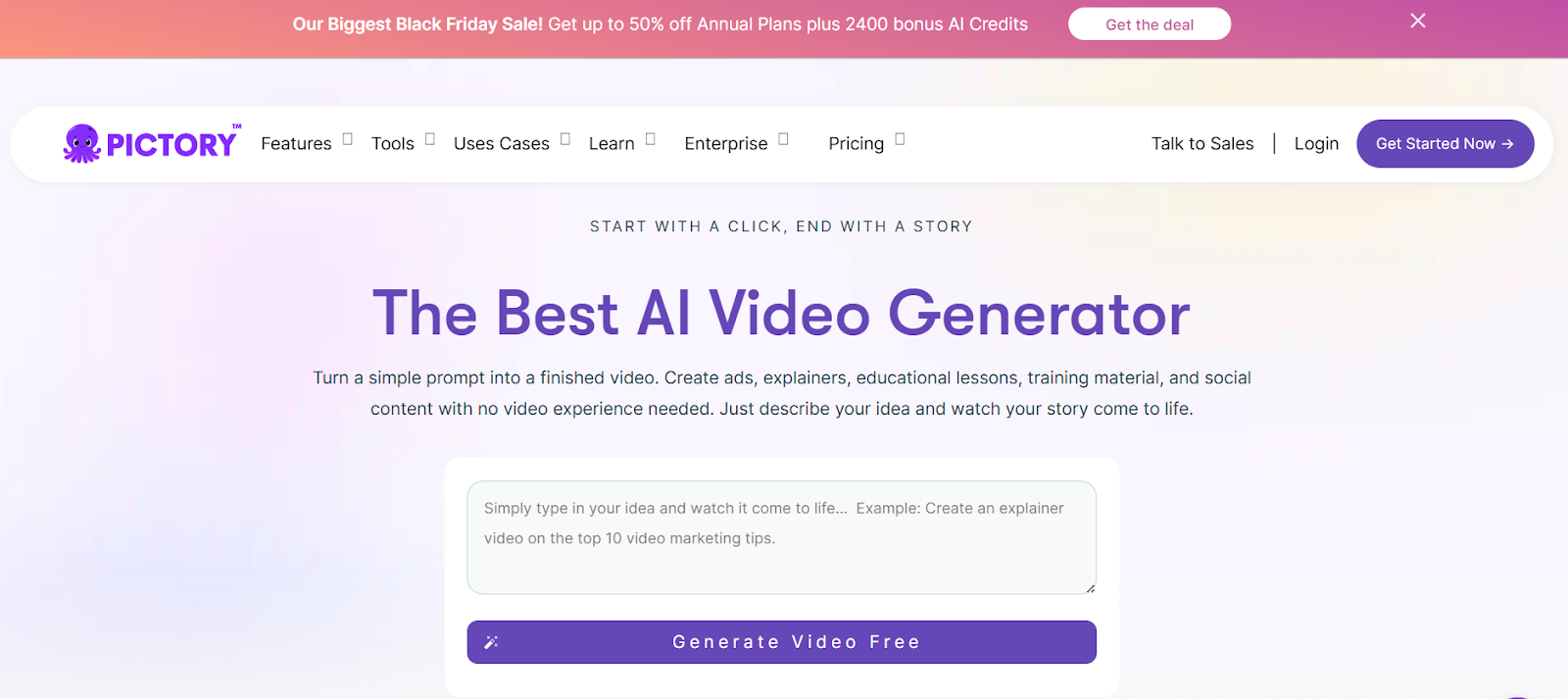8 Best AI Video Generators to Transform Your Marketing in 2026

AI video generators have become core growth infrastructure for 2026 marketers. They turn static images into Meta-ready ads, TikTok UGC, YouTube Shorts, and product explainers in minutes, removing the need for lengthy production cycles.
The real advantage: creative velocity. Top-performing teams now produce 20–30 video variations per idea, testing hooks, lengths, messages, and platform styles. With predictive creative intelligence guiding the process, ROAS improves dramatically.
Among these tools, Quickads.ai stands apart. As the world’s only full-stack, award-winning ads operating system, Quickads shows you what to make, why it will convert, and turns images into high-performing videos instantly. Its data-backed approach lets small teams operate like full creative departments.
This guide breaks down the 8 image-to-video tools that will shape performance marketing in 2026.
What AI Video Generators Really Mean for Marketing
AI video generators automate nearly every step that previously slowed marketers down: scripting, editing, clipping, transitions, captions, voiceovers, pacing, and even on-screen avatars.
For years, the creative bottleneck looked like this:
Teams had too many ideas, but not enough editors, time, or budget to produce them. That meant fewer tests and slower creative iteration, which directly affects revenue.
AI video generators flip this completely.
Instead of thinking in “campaign cycles,” teams shift into continuous creative iteration, something only top-performing brands historically achieved. Modern systems generate videos from:
• A text prompt
• A script
• A blog post
• A set of images
• A talking-head UGC clip
• A product photo
This removes the dependency on traditional production. Personalized, platform-native video creation, once reserved for studio budgets, is now fully automated.
If you want to understand how this shift affects the entire video landscape, read the article on Effortless Video Ad Creator: Design Stunning Ads in Minutes explains how brands are using these tools to launch adaptive, high-performance video ads with minimal effort.
Why AI Video Generators Matter in 2026
2026 is the strongest year ever for short-form video. Every major platform has moved toward motion-first algorithms:
• Instagram Reels now accounts for 50%+ of time spent in the app
• TikTok remains the #1 discovery engine for DTC brands
• YouTube Shorts delivers over 70 billion views daily
• Meta's Advantage+ strongly favors video ads over static images
• Google PMAX automatically prioritizes video-driven placements
This means growth teams win by posting more and faster, not by crafting one “perfect” video. Performance marketing is now probability-based: the more creative variations you test, the higher the chances of discovering a breakthrough.
AI video generators help brands:
• Produce platform-specific outputs instantly
• Personalize videos for smaller audience slices
• Turn blogs and long-form content into Shorts
• Stay aligned with trending formats
• Ship 10–20 videos weekly instead of 2–3
How We Selected the Tools
We evaluated each platform across eight dimensions tied directly to modern growth workflows:
- AI video realism
- Relevance to marketing (specifically performance ads)
- Speed-to-output
- Brand consistency tools (kits, color systems, fonts)
- UGC styles, templates, and platform formats
- Scalability (batch generation, variations, workflows)
- Team collaboration
- Pricing and accessibility
Tools that were more “creative experiments” than revenue engines were removed. This list prioritizes platforms with real marketing impact, not just novelty generation.
The 8 Best AI Video Generators for 2026
1. Quickads.ai

Quickads.ai is the only full-stack, award-winning ads operating system designed specifically for performance creative. This is not “another AI video generator”, it's an end-to-end creative engine built for teams that want to produce videos that convert, not just videos that look good.
Quickads blends three layers in a single platform:
- Creative Intelligence: Scores ideas, predicts performance, and recommends high-ROI creative concepts.
- Ad Blueprints: Frameworks proven across Meta, TikTok, YouTube, and PMAX.
- Automated Video Generation: Platform-ready video outputs produced directly from scripts, prompts, or images.
Its UGC-style ads, hooks-based frameworks, product demos, and Shorts-ready assets are built for ROAS, not just aesthetics. Video generation is instant, variations are automated, and everything is optimized for ad delivery systems.
What truly sets Quickads apart is how it merges AI video creation with real creative strategy. If you're new to data-backed video creation, their piece How to Create Video Ads That Actually Convert lays out why certain angles, hooks, and motion patterns consistently outperform others.
Best For: Media buyers, DTC brands, agencies, performance teams
USP: Creative intelligence + instant ad video generation
Output Types: UGC ads, Shorts ads, motion demos, hooks-based variations
2. HeyGen

HeyGen is unmatched when it comes to AI avatars, realistic presenters, and lip-syncing. Its multilingual support makes it ideal for brands running global campaigns.
Strengths:
• 100+ avatars with studio-quality presence
• Accurate facial motion and voice syncing
• Crisp, professional look
Use Cases:
• Landing page explainers
• Personalized sales outreach
• Top-of-funnel educational videos
• Multilingual campaigns
USP: Studio-quality presenters without needing a studio.
3. Descript

Descript reinvented video editing by making it work like editing a Google Doc. For teams that repurpose a lot of long-form content, webinars, interviews, podcasts, Descript becomes essential.
Strengths:
• Transcript-based editing (delete words = delete video)
• Overdub AI voice cloning
• Automatic filler word removal
• Short-form cutdowns in minutes
Use Cases:
• Turning a 45-minute webinar into 10 Shorts
• Creating TikTok-style clips from podcasts
• Cleaning up demo videos
USP: The fastest way to convert long-form content into social-ready ads.
4. RunwayML

RunwayML is AI video at the bleeding edge. Its Gen-3 model is capable of producing surreal, stylized, cinematic generative video that stands out in crowded feeds.
Strengths:
• Text-to-video at high fidelity
• Image-to-video with depth and motion
• Style transfer that feels premium
• Experimental creative outputs
Use Cases:
• Brand campaigns with distinctive art direction
• High-production-feel ads without production
• Viral-style experimental Shorts
USP: Unmatched creative flexibility and generative power.
5. InVideo AI

InVideo AI helps marketers go from idea → script → video in minutes. It’s fast, accessible, and built for teams focused on speed.
Strengths:
• Script-to-video workflow
• Large ad template library
• Stock footage + music baked in
• Auto-resizing for all platforms
Use Cases:
• Social-first brands
• Weekly promotional videos
• Fast-moving DTC campaigns
USP: Speed + simplicity for scrappy marketing teams.
6. Pictory AI

Pictory’s strength is long-form repurposing. If your team produces blogs, webinars, interviews, or whitepapers, Pictory can turn them into multiple short videos automatically.
Strengths:
• Article-to-video conversion
• Auto-captioning
• Branding presets
• Voiceover support
Use Cases:
• SEO + content marketing teams
• Thought leadership repurposing
• LinkedIn video content
USP: Turn any long-form content into multiple short-form videos.
7. Fliki

If voiceovers matter, Fliki wins. It offers the best AI voices, languages, and tonal variations in the industry.
Strengths:
• 2,000+ voices
• 75+ languages
• Emotion and tone controls
• Excellent natural-sounding narration
Use Cases:
• Global ad campaigns
• Audio-centric videos
• Localized versions of ad creatives
USP: Voiceovers that actually sound human.
8. Colossyan Creator

Colossyan makes presenter-led videos easy to scale for enterprise teams. Consistency is its biggest strength.
Strengths:
• Branded avatars
• Clean professional templates
• Auto-translations
• Strong corporate tone
Use Cases:
• Onboarding videos
• Training modules
• Product demos
• Professional marketing explainers
USP: Consistent presenter videos that look enterprise-grade.
FAQs
- How much faster can AI video tools create videos?
Most tools reduce production time from days to 30 minutes or less. Quickads.ai can generate platform-ready ad videos instantly. - Can AI-generated videos outperform traditional filmed content?
Yes, because AI allows rapid iteration, personalization, and data-backed creative improvement. - Are these tools good for UGC-style ads?
Absolutely. Quickads, InVideo, and Colossyan all produce UGC-like outputs optimized for TikTok, Meta, and YouTube. - Will AI replace video editors entirely?
Not fully. AI handles repetitive production tasks; humans still own strategy, story, and nuance. - Can these tools generate multiple variations automatically?
Yes. Tools like Quickads.ai specialize in variation-based creative workflows. - Are AI video generators suitable for B2B?
Yes. B2B brands use them for explainers, demos, onboarding, outreach, and product walkthroughs. - Do these tools maintain brand consistency?
Most support brand kits, fonts, color palettes, and reusable templates. - What about voiceovers and scripts?
Tools like Fliki and Descript excel at voiceovers; Quickads generates scripts based on winning ad patterns. - Will AI video be fully real-time by 2027?
Creative intelligence, auto-generated variations, real-time testing, and dynamic personalization will become standard. - Which tool is best for ad-heavy brands?
Quickads.ai, because it combines creative intelligence, ad frameworks, and instant video generation.
Final Insight: The Rise of Creative Intelligence
The biggest shift isn’t AI generating videos, it’s AI understanding which videos perform. In 2026 and beyond, the competitive advantage lies in creative intelligence, not just creative automation.
Brands that pair rapid AI video production with data-backed guidance will be able to iterate faster, personalize deeper, test more, and outperform teams relying on traditional production cycles.
We’re entering a world where content won’t just be created, it will be predicted, adapted, and optimized automatically. High-velocity teams will flourish.

















